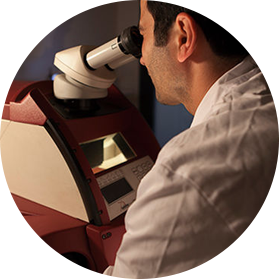
Laser Welding
Medical devices are often comprised of multiple metal components that must be joined. With small Heat Affected Zones, minimal distortion and high finishing standards, laser welding is the ideal joining methodology for complex, delicate medical micro-devices.
ANV Laser provides expert laser welding services:
- Design and construction of specialized jigs
- State-of-the-art 3-axis CNC equipment
- Welding points as small as DIA. 0.05mm
- Can be done under Clean Room (class 7) conditions
Welding is the physical connection of metals by forming atomic relations between them as opposed to soldering, for example, in which metals are joined by melting additional material. The physical joining of the metals through welding is achieved through heating or through plastic transformation or through both.
Did you know that the focused laser beam has the highest energy concentration of any known source of energy? In laser welding (sometimes referred to as laser beam welding, or LBW), the beam provides a concentrated heat source with a very high power density (on the order of 1 MW/cm2). The result: small Heat Affected Zones and high heating and cooling rates. Lasers can interact with any material, do not require a vacuum and do not produce x-rays.
Laser welding is ideal for joining components made of materials with a high melting point and high heat conductivity. Due to the small amount of molten material and the short, controllable melting period, some materials can be joined that otherwise could not be welded. Laser welding is also ideal for hard to access areas and for extremely small components.
The main steps of the laser welding process are:
- The laser focus spot is targeted on the workpiece surface to be welded.
- At the workpiece surface the concentration of light energy converts into thermal energy (heat).
- The heat causes the surface of the material to melt, which progresses through the surface by the process of surface conductivity.
- Throughout the welding the beam energy level is maintained below the vaporization temperature of the workpiece material.
The laser weld quality is high, producing narrow and non-porous weld seams. It is also possible to achieve different weld depths, from surface welds (conduction mode welding) to keyhole welds (penetration mode welding). The finishing standard of laser welding is also very high and requires no post-weld grinding or handling. The welding speed is determined by the amount of power applied as well as by the type and thickness of the workpieces.
